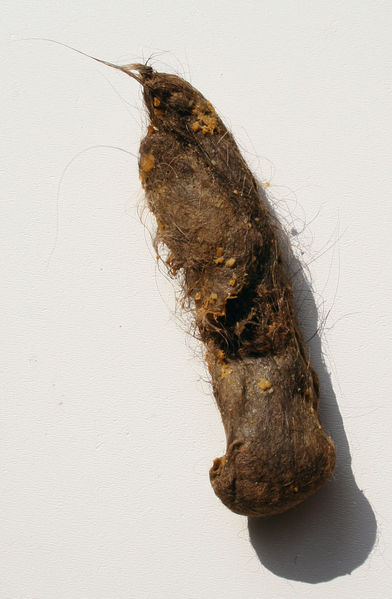AbstractWhile scholars are not certain as to when the theory of Caveat Emptor came into being, most agree that Chandelor v. Lopus is the original example of the doctrine under English common law. It is for this reason that the case is so important to western legal traditions. At issue in the case was whether a legal cause arose from the sale of defective products, where they were not warranted to be in perfect working order. The decision essentially made the fairness of commercial transactions a matter that contracting parties were to handle by themselves. The court’s decision set the standard for minimalist judicial intervention in the commercial sphere, and demonstrated a commitment to non interference with individual contracts.The CharactersChandelor: Occupation: Goldsmith. In European societies at the time of the Chandelor ruling, goldsmiths were one of the most important and lucrative trades in society. They were organized into guilds which established both quality and price control on its members. The guild also included a system of training and education for its artisans. In effect Goldsmiths often acted as bankers, since they dealt in gold and had sufficient security for the safe storage of valuable items. Their work included not only with gold but close association with most precious stones and metals. Chandelor’s occupation as a goldsmith is important for a couple of reasons. Primarily, it establishes his competitive advantage in knowledge of precious stones over Lopus, demonstrates the relative power of his trade, and also serves to demonstrate the common critique that caveat emptor proved most beneficial to the upper class. This critique, as well as large gaps in the ability to garner information have largely led to the demise of Caveat Emptor in general commercial transactions. Jan van Eyck’s Portrait of the Dean of the Goldsmiths’ Guild in Bruges demonstrates the lofty social status of Goldsmiths during this time.
Lopus: Occupation: Unknown.
As telling as Chandelor’s profession was for historical context, it is equally interesting that the record mentioned no descriptive detail about Lopus, neither citing any experience with precious stones nor describing his trade. Despite extraordinary efforts I have found no such information on him.
Bezar Stone: A Bezoar stone is a mass formed in the stomach of animals that does not pass into the intestine. These stones were largely found from wild goats in Arabia and caused from toxins the animals were introduced to. The stones were largely believed to have special curative powers and were thought to be able to counteract any poison. Jan van Eyck’s Portrait of the Dean of the Goldsmiths’ Guild in Bruges demonstrates the lofty social status of Goldsmiths during this time.
Lopus: Occupation: Unknown.
As telling as Chandelor’s profession was for historical context, it is equally interesting that the record mentioned no descriptive detail about Lopus, neither citing any experience with precious stones nor describing his trade. Despite extraordinary efforts I have found no such information on him.
Bezar Stone: A Bezoar stone is a mass formed in the stomach of animals that does not pass into the intestine. These stones were largely found from wild goats in Arabia and caused from toxins the animals were introduced to. The stones were largely believed to have special curative powers and were thought to be able to counteract any poison.
 Intestinal products such as this were revered as pricey Bezar (Bezoar more commonly) stones. Intestinal products such as this were revered as pricey Bezar (Bezoar more commonly) stones.
The CaseChandelor v. Lopus, 79 Eng Rep. 3. (1603) In the Exchequer- Chamber The defendant (Chandelor) was a goldsmith and had a special knowledge in precious stones. This Defendant owned a stone which he affirmed to the Plaintiff Lopus was a bezar stone and sold it to Lopus for 100 pounds. Lopus subsequently found that the stone possessed no healing powers and sued Chandelor before the King’s Bench. Defendant pleaded not guilty, however a judgment was entered for the plaintiff in the King’s Bench. The court in the Exchequer Chamber reversed the decision on a procedural point claiming that the plaintiff (Lopus) had not alleged or proven that the defendant had actually warranted the stone to be a bezar. The court claimed that “the bare affirmation that it was a bezar-stone, without warranting it to be so, is no cause of action: and although [the defendant] knew it to be no bezar-stone, it is not material; for everyone in selling his wares will affirm that his wares are good, or the horse which he sells is sound; yet if he does not warrant them to be so, it is no cause of action, and the warranty ought to be made at the same time of the sale.” Chandelor v. Lopus, 79 Eng. Rep. 3. Anderson, J., dissented in part yet affirmed the outcome. He argued that the deceit in selling the stone as if it were a bezar stone, when it was not, was indeed a sufficient cause of action for the plaintiff.The Holdings1) The court held that the quality of the bezar stone, which the seller had not expressly warranted, is a risk the buyer must assume and 2) That there was no fraud in selling the stone as a bezar, so long as the seller did not expressly warrant it to be one. (The court found the mere affirmation that the rock was a bezar was not enough for it to be a promise or a warranty.) As Applied in the Common Law: As applied in the larger common law Chandelor stood for the notion that unless a merchant specifically warranted an object as sound, the buyer must accept the risk that it may not be. As a policy measure, buyers were encouraged to seek express warranties and were theoretically in a position to do such with their buying power. In actuality the ruling made sellers hesitant to expressly guarantee their wares- a problem that led to the eventual curtailment of this policy in American Jurisprudence.The AftermathWhile Chandelor was decided on procedural grounds, subsequent reliance on it as precedent has focused on the fact that the defendant was not allowed a cause of action against a vendor who sold him unfit merchandise. It has been largely heralded as the birth of “Caveat Emptor” the Latin phrase meaning “let the buyer beware.” Under the English common law, this legal doctrine held the buyer of goods responsible for purchasing defective merchandise, unless the seller had definitively warranted their condition, or had attempted to actively conceal defects. While Chandelor stood for the idea of Caveat Emptor in the English Legal, Seixas v. Wood is considered its American counterpart. Here a merchant sold wood to the plaintiff which had been advertised as braziletto wood. Despite this advertisement, the merchant inadvertently sold the defendant peachum wood instead. The court relies heavily on Chandelor in finding that in the absence of the merchant’s fraud, the plaintiff had a duty to inspect his purchase and to obtain an express warranty from the seller. Seixas v. Wood, 2 Cai. R. 48 (N.Y. Sup. Ct. 1804). While the Chandelor case made it of no consequence that the defendant fraudulently held his item as a bezar stone, its progeny has been fairly adamant in stating that knowingly mischaracterizing a sale will be a cause of action in the courts. Laidlaw v. Organ, a decision written in 1817 by Chief Justice John Marshall, is believed by scholars to have been the first U.S. Supreme Court case which laid down the rule of caveat emptor in U.S. law. As applied, Chandelor’s legacy largely put buyers in a considerable quandary. Sellers had little incentive to give warranty express warranties as this would expose them to legal risk. Additionally, buyers were less and less able to properly inspect the inner workings of increasingly complex and advanced merchandise. The seminal American case which began a real scaling back of the Caveat Emptor doctrine was Hawkins v. Pemberton, 51 N.Y. 198 (1872). Here, the defendant sold bottles labeled “blue vitriol” to the plaintiff and had simply bought the bottles from a supplier and never checked their contents before reselling. The item actually turned out to be of inferior quality and although the defendant attempted to argue that Seixas held as there was no express warranty, the court held that “the rule [in Seixas] has been thoroughly overturned since the courts held that any positive affirmation or representation as to the character or quality of an article sold may constitute a warranty.” Hawkins v. Pemberton, 51 N.Y. 198 (1872). In 1906 the Uniform Sales Act was introduced and adopted by half of the States in the union. It worked to codify the holding in Pemberton, stating that “any affirmation of fact or promise by the seller relating to the goods is an express warranty if the natural tendency of such affirmation or promise is to induce the buyer to purchase the goods, and if the buyer purchases the goods relying thereon.” Article 2 Section 12 Uniform Sales Act. While the complexities of modern commercial transactions led to the demise of Caveat Emptor in most transactions, the idea still claims considerable weight with transactions where the goods are easily inspected. For example, in most American jurisdictions, the rule of Caveat Emptor still specifically applies with investments, and real estate. The concepts in these trades are moderated by consumer protection and disclosure statutes, but absent actual fraud, these transactions demonstrate the clearest application of the policy behind Caveat Emptor- to ensure that buyers inspect and are diligent in their purchases.
|
|

